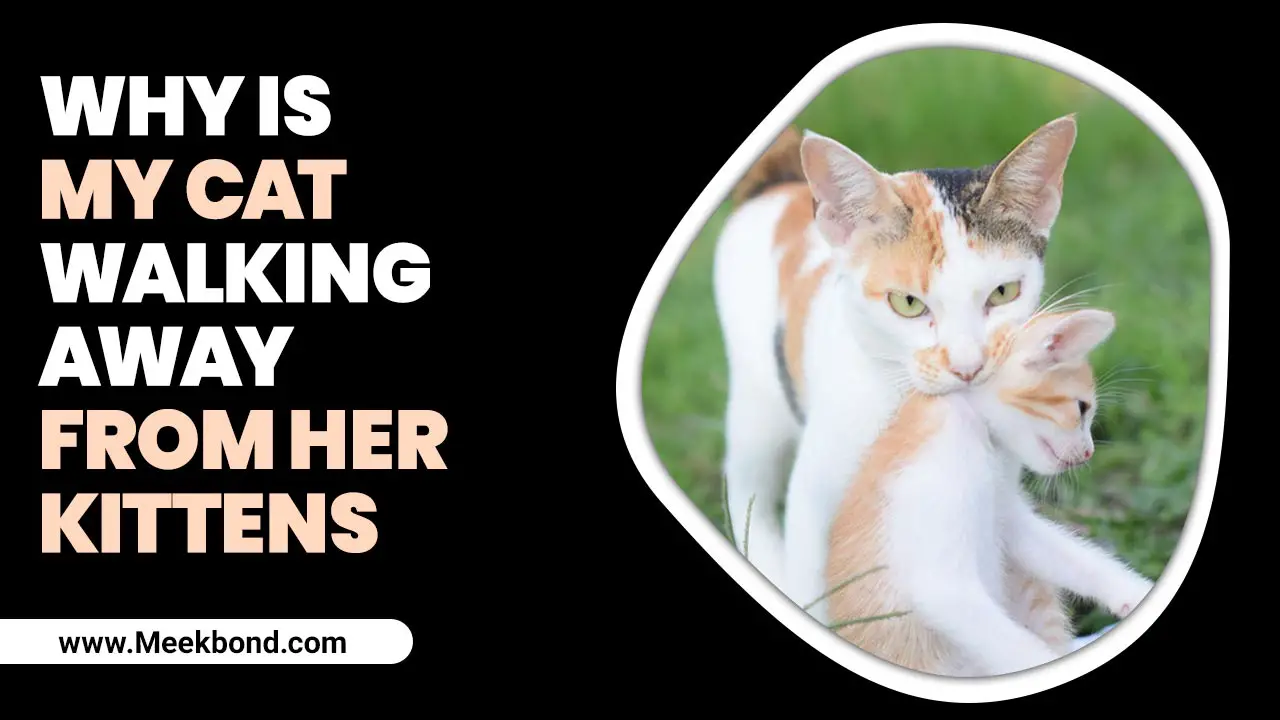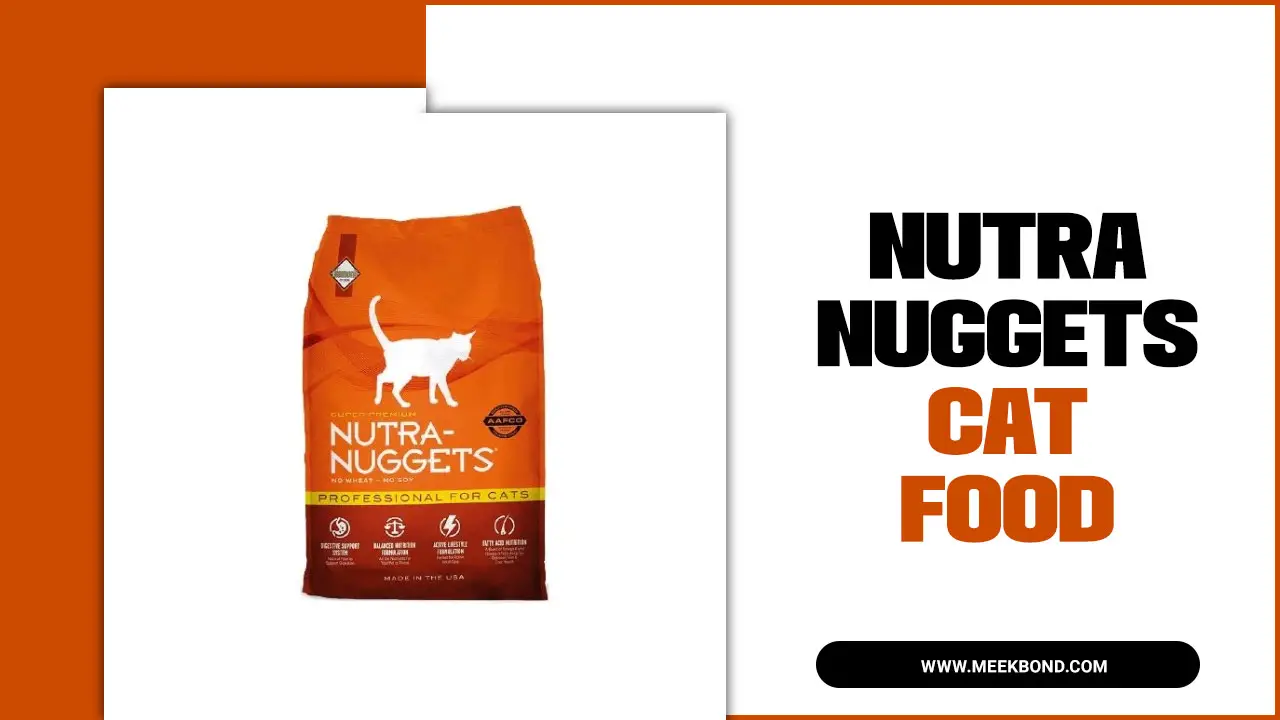The size of a normal cat pee clump size can vary depending on the size and hydration level of the cat, as well as the type of litter used. Generally, a healthy cat will produce urine clumps about the size of a golf ball or smaller.
Here we will cover all the aspects related to a cat’s urination habits, including the factors impacting pee clump size, such as hydration, diet, age, and medical conditions. We will also discuss how stress and environmental factors affect your cat’s pee clump size. By the end of this article, you will better understand what is generally considered a normal pee clump size for a ~14 lb cat and be able to monitor your pet’s urinary health more effectively.
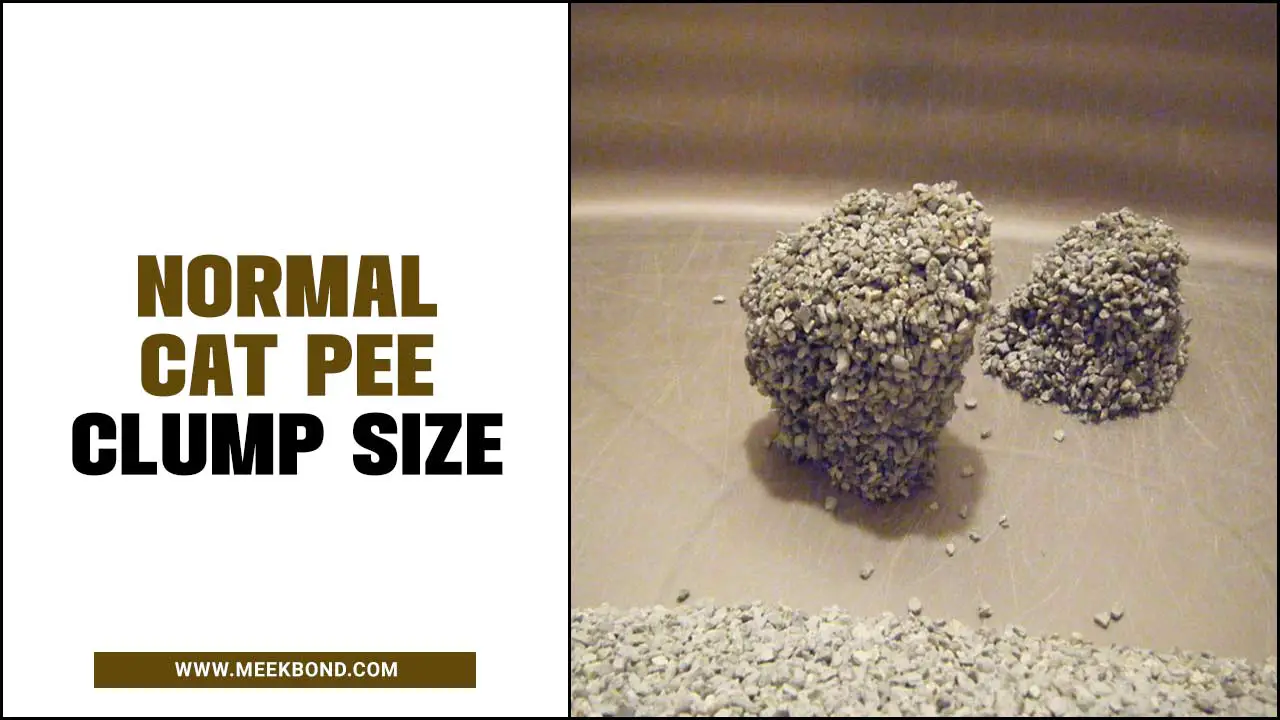
Estimation Of Normal Cat Pee Clump Size

The size of cat pee clumps can vary depending on the cat’s hydration levels, typically ranging from the size of a golf ball to a tennis ball. Solid and well-formed clumps are indicative of proper hydration and overall good health. Keeping track of the size of your cat’s urine clumps can provide insights into their overall health and hydration levels.
Unusually small or large clumps may suggest underlying health issues, so it’s crucial to consult with a veterinarian to determine what is considered normal for your cat. Keeping your litter box clean can help ensure that you accurately monitor your cat’s urine output and clump sizes and promote good hygiene practices in your home. Scroll down to get in details on normal cat pee clump size.
Amount Of Urine Produced By A Cat Daily
On average, a healthy cat produces approximately 20-40 millilitres of urine per kilogram of body weight each day. The amount of urine produced can vary depending on factors such as hydration levels, diet, and overall health. Cats with certain medical conditions may exhibit increased or decreased urine production. Monitoring your cat’s urine output is crucial for assessing kidney function and hydration status. Any significant changes in urine production should be promptly discussed with a veterinarian.
What Constitutes Cat Pee Clump Size?
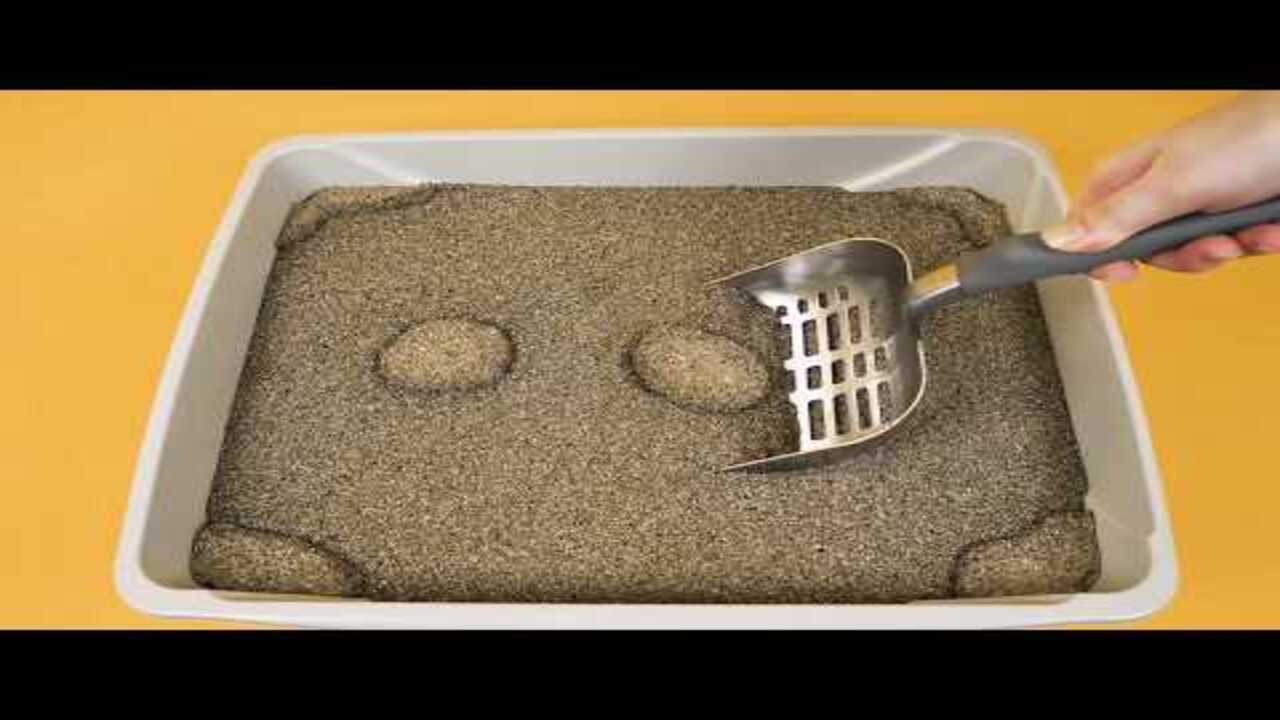
Monitoring your cat’s urinary health is important, and understanding what constitutes cat pee clump size can help you detect potential issues early on. Generally, smaller clumps indicate a healthy urinary system. Normal clumps should be smaller than a golf ball and should not contain blood clots or have an unusual odor.
If you notice larger clumps than usual or abnormalities in your cat’s urine, it’s essential to consult a veterinarian promptly. Regularly monitoring your cat’s urine can help identify any underlying health concerns and ensure your pet stays healthy.
Factors Influencing Cat Pee Clump Size
Factors like diet, water consumption, and health conditions can influence cat pee clump size. If your cat consumes a wet diet, it may produce larger clumps due to increased water intake. On the other hand, if your cat is dehydrated, the urine becomes concentrated, resulting in smaller clumps.
Health conditions like urinary tract infections or bladder stones can also affect the size of the clumps. It is crucial to monitor these factors to maintain your cat’s urinary health. Regular monitoring of your cat’s litter box habits can help you identify changes in their urine volume or clump size and seek veterinary help if necessary.
Significance Of Hydration In Determining Cat Pee Clump Size
Adequate hydration is crucial in determining the size of a cat’s pee clumps. Cats should always have access to fresh water to prevent dehydration. Cats consuming more water can result in larger clumps, indicating proper hydration.
Monitoring your cat’s water intake and encouraging sufficient hydration is essential for maintaining a healthy clump size. On the other hand, dehydration can lead to smaller and more concentrated clumps, which may indicate underlying health issues.
Influence Of Diet On Cat Pee Clump Size
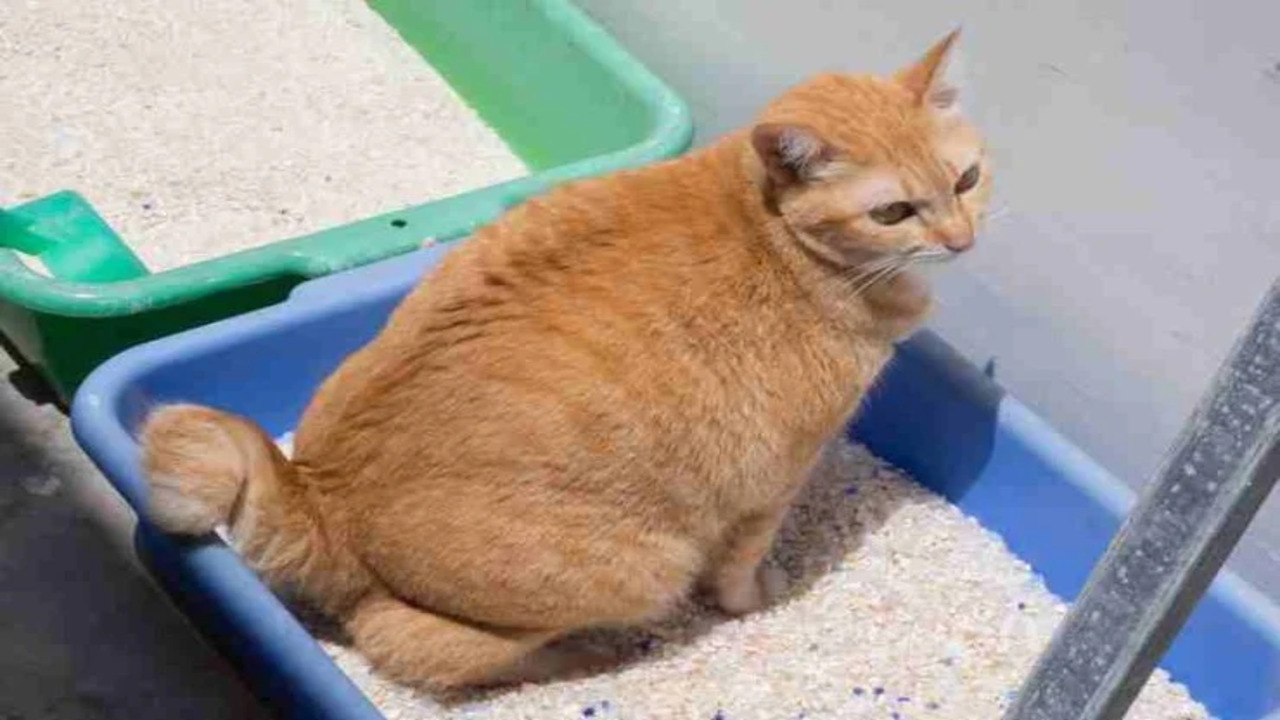
Their diet highly influences the size of cat pee clumps. Feeding your cat a wet diet can increase their water intake and lead to larger clumps. Conversely, dry food diets with lower water content may result in smaller clumps. It is essential to provide a balanced diet that meets your cat’s nutritional requirements to maintain normal clump size.
Consulting a veterinarian can help determine the best diet for your cat’s urinary health. Moreover, it is also important to monitor your cat’s water intake and encourage them to drink more water if necessary. This can help prevent urinary tract infections and other related health issues. Adequate hydration is also beneficial for maintaining healthy skin and coat and overall organ function.
How Does Age Affect Cat Pee Clump Size?
The size of a cat’s pee clump can indicate its age and health condition. Kittens generally have smaller clumps due to their smaller size and developing urinary systems, while senior cats may experience changes in clump size due to age-related health conditions.
As a pet owner, monitoring your cat’s clump size is important to detect any abnormal changes related to age or illness. If you notice significant differences in your cat’s pee clump size, it is advisable to seek advice from a veterinarian. Maintaining good litter box hygiene can also help keep track of your cat’s urinary tract health.
Changes In Pee Clump Size With Age
As cats age, their pee clump size can vary. Older cats often produce larger clumps due to decreased kidney function. Age-related conditions like kidney disease or urinary tract issues can also impact the size of the clumps. It is important to closely monitor your cat’s clump size and consult with a veterinarian if you notice any significant changes. Adjustments to diet and hydration may be necessary to maintain your ageing cat’s urinary health.
Medical Conditions Impacting Cat Pee Clump Size
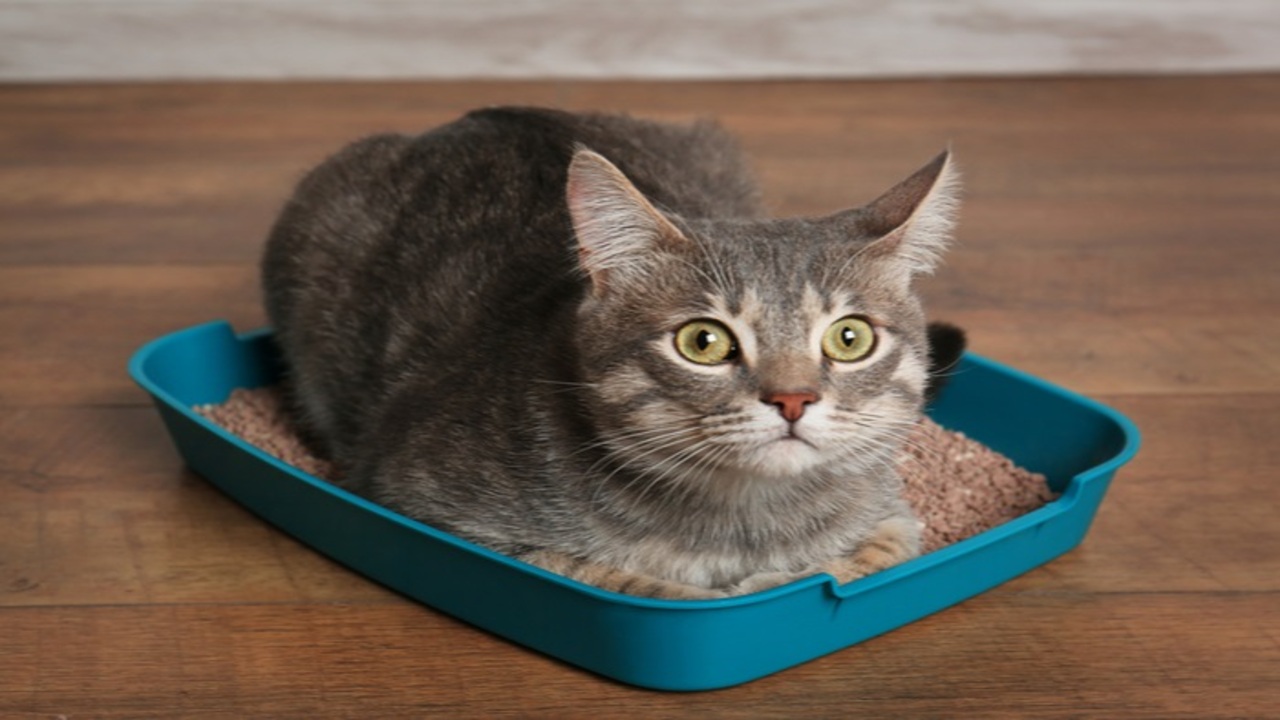
Certain medical conditions can impact the size of cat pee clumps. Excessive urination, known as polyuria, can lead to larger clumps due to increased urine production. Conditions like urinary tract infections or hormonal disorders can also influence clump size.
Monitoring clump size is important in identifying potential health concerns and seeking timely veterinary care. Regular vet check-ups are essential for diagnosing and managing any medical conditions affecting clump size.
Polyuria And Its Impact On Pee Clump Size
In cats, Polyuria, or excessive urination, can result in bigger clumps in their litter box. This change in urine production can indicate underlying health problems like diabetes mellitus or kidney dysfunction. By observing your cat’s urination patterns and the size of clumps, you can detect potential polyuria and seek advice from a veterinarian if needed.
Early identification and treatment of polyuria are essential to prevent further complications. In addition to monitoring your cat’s litter box, you should also look out for other symptoms, such as increased thirst, weight loss, or lethargy, that could indicate an underlying medical condition. Prompt veterinary attention can help identify the cause of polyuria and provide appropriate treatment to improve your cat’s health.
Other Health Issues Affecting Pee Clump Size
Certain health conditions, such as feline lower urinary tract disease (FLUTD) or kidney disease, can affect the size of a cat’s pee clumps. These conditions may cause changes in clump size and may be accompanied by symptoms like blood, swelling, or pain while urinating.
Monitoring your cat’s litter box for abnormalities is crucial in detecting potential health issues. If you notice any changes or have concerns about your cat’s pee clump size, it’s important to seek prompt veterinary care for diagnosis and management.
Can Stress Influence The Size Of Cat Pee Clumps?
Stress can have a significant impact on the size of cat pee clumps. Cats undergoing stress or anxiety may change their urination patterns, resulting in larger or smaller clumps. Managing stress-related urinary problems can be done by creating a stress-free environment and seeking guidance from a veterinarian or cat behaviorist.
Identifying the root cause of your cat’s stress is important to provide them with the appropriate care and address any underlying medical conditions that may contribute to their urinary issues. Additionally, providing ample litter boxes and keeping them clean can help alleviate any discomfort your cat may feel when urinating. By addressing your cat’s stress and implementing proper management techniques, you can ensure that they maintain optimal health and well-being.
How Does Environmental Factors Impact Cat Pee Clump Size?
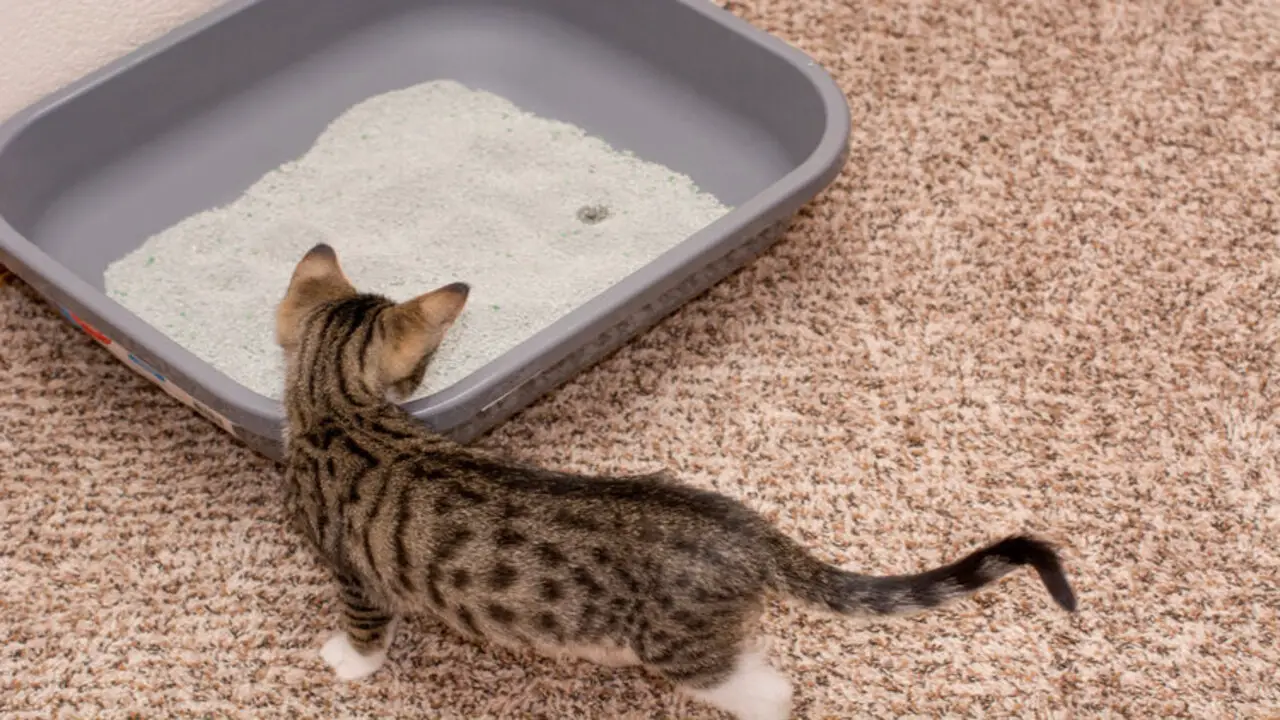
Changes in a cat’s litter box environment can affect the size of its urine clumps. Litter type, cleanliness, and location can impact cat pee clump size. Environmental stressors may also alter a cat’s urination patterns and clump size. Cats may produce larger or smaller clumps depending on their comfort level in the litter box. Paying attention to environmental factors can help maintain a healthy cat pee clump size.
What Is Generally Normal Pee Clump Size For A ~14 Lb Cat?
The size of a cat’s pee clump can provide valuable insight into kidney function and overall health. A healthy, average-sized pee clump for a 14 lb cat should be about the size of a golf ball and easily scoopable from the litter box.
It is important to monitor clump size regularly, as abnormal sizes may suggest underlying health issues that require veterinary attention. Some possible causes of abnormal clump sizes include dehydration, urinary tract infections, or kidney disease. Regular checkups with a veterinarian can help ensure proper kidney function and overall feline health.
Conclusion
Monitoring the size of your cat’s pee clumps is crucial for maintaining their health and detecting potential problems. Various factors such as hydration, diet, age, and medical conditions can impact the size of cat pee clumps.
It’s important to monitor any changes in the clump size as it could signal an underlying issue. If you notice any abnormalities or have concerns about your cat’s urination habits, it’s recommended to seek veterinary advice.
Being informed and proactive about your cat’s urinary health is necessary to provide them with the best care possible and ensure their well-being. Regular check-ups with a veterinarian can also help detect urinary tract infections or other conditions early on, allowing for prompt treatment and a better prognosis. We mentioned above normal cat pee clump size.
Frequently Asked Questions
Why Is My Cat’s Pee Chunky?
Chunky cat pee can be a sign of dehydration, urinary tract infection, bladder stones, or crystals in the urine. It is important to consult a veterinarian to determine the underlying cause. Adequate water intake and a balanced diet can help prevent chunky cat pee.
Why Is My Cat Leaving Small Pee Spots?
Small pee spots in cats can indicate a urinary tract infection or other medical issues. It could also be a form of territorial marking. Ensure easy access to a clean litter box, and consult a veterinarian if you notice any changes in your cat’s urinary habits.
What Is A Normal Cat Pee Clump Size?
When it comes to a normal cat pee clump size, it can vary based on the type of litter used. Typically, a clump size of 1-2 inches in diameter is considered normal for clay litter. Larger clumps may indicate the need for more frequent cleaning. Any significant changes in clump size or consistency should be discussed with a veterinarian.
How Much Pee Is Normal For A Cat?
On average, cats produce around 2-3 ounces of urine daily. Factors like age, diet, and water intake can influence the amount of urine they produce. A healthy cat should urinate at least once a day. If your cat is not peeing or producing very little urine, it may indicate an underlying health issue and requires veterinary attention.
Why My Cat Pee Is Chunky?
Factors like dehydration or kidney problems can cause chunky cat pee. Monitoring your cat’s hydration and water intake is crucial. If the chunky urine persists, consult a veterinarian for further evaluation. Consider changing your cat’s diet and increasing water intake as well.

Aquarium passion is all about connecting with the aquatic life and providing education to the public on the importance of these creatures. We showcase a wide variety of marine life through our exhibits as well as working with schools to provide unique learning opportunities for students of all ages.

